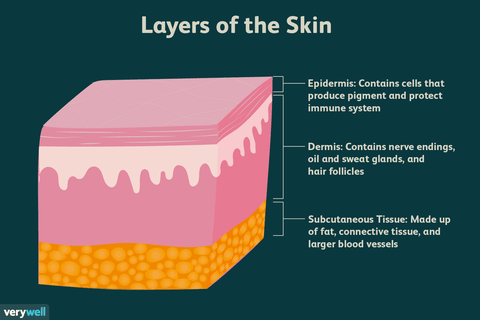Where does My Microbiome Come From?
You might have heard about the skin microbiome, but do you know where it came from and the wonderful things it's doing right now to protect + upkeep your skin? On your face and on your entire body is an invisible factory of fungi & bacteria that work together to promote health, glowing skin. Your microbiome plays a direct role in a myriad of aspects of your skin, from skin texture to hydration levels, the work your microbiome does is almost incomprehensible. Read below to learn more about what your microbiome is doing behind the scenes to protect you & your skin.
Believe it or not, your microbiome is “born” exactly when you are. Research has shown babies born via vaginal birth have a microbiome flora similar to their mother’s vagina, and those born via C-Section have a microbiome similar to skin. So if you have particularly good skin, be sure to thank your birth mother today! As you are born the first microbial visitors immediately get to work and help train your skin to recognize bacteria that are good, bad, or neutral. This differentiation is imperative to your overall health and research shows that the first contact of your mother’s microbiome can be observed all the way until adulthood.
A baby’s budding microbiome is also learning how to stay alert to harmful pathogens that might hurt the skin, or your entire body. As you grow older your microbiome will diversify and strengthen. The big changes occur when you reach puberty, and hormonal changes alter your microbiome as you grow into your new body. Puberty aids in sculpting the framework for your microbiome that you will likely carry your whole life.
How Does the Microbiome Protect You Against Pathogens?
To understand how your microbiome protects you against outside influences, you must understand the different layers of the skin. There are three specialized layers on your skin, the hypodermis, dermis, and epidermis. See a diagram below for clarity.

The skin is formed by numerous layers of epidermal and dermal keratinocytes, a fancy way of saying specialized skin cells that are the perfect amount of porous and protective. The outermost layer of the epidermis is the stratum corneum, which is composed of as many as 100 layers of keratinized cell envelopes that form a protective barrier.
Microbiome Barrier
The outermost layer exposed to the environment around you is where most of your microbiome lives. This layer plays a direct role in your skin barrier function and ensures homeostasis. Your microbes secrete important enzymes that promote “desquamation”, another way of saying, cell renewal. Your microbiome is directly involved in making sure your skin is being properly replenished and unkempt throughout your life. Just like we exfoliate to keep our skin glowing, your microbiome is constantly at work on a molecular level, ensuring that dull and dead skin cells are eradicated and new cells can flourish.
Healthy Competition
As much as your microbiome works in cohesion to keep you healthy, there’s much more to the story. The truth is, bacteria is inherently competitive. This competitive nature is a good thing, it promotes evolution, survival, and proliferation of only the fittest and most robust bacteria. To “ensure survival, skin resident bacteria must compete to maintain colonization of their niche and access to nutrients. As in any ecosystem, competitive interactions are continuously occurring between microorganisms. In the skin, resident microbiota protect the skin from invading, pathogenic, or opportunistic microbes through the process of colonization resistance one manner in which bacteria can eliminate competition is through direct killing of competing microbes” (Flowers, Grice, The Skin Microbiota: Balancing Risk and Reward). That’s right, on your skin right now is a battle between bacteria and fungi, all working together to keep you balanced.
However, sometimes the bad bacteria wins. This is how certain skin conditions like eczema, atopic dermatitis, acne and psoriasis occur. Keeping a healthy and balanced microbiome is of the utmost importance when it comes to your skin health.
How Do I Know if my Microbiome is Unbalanced?
Multiple skin issues including: dryness, itchiness, acne, rosacea, eczema & more have been linked with disruptions within the microbiome. If you are suffering from skin descriptions, there is a high chance your microbiome is unbalanced. Simply put, you cannot have healthy skin if your microbiome is not healthy.
The only way to know the state of your microbiome for sure is to test it, our Skin Microbiome Kit is an easy to use test that can be completed in the comfort of your home. With just one swab you can discover the trillions of bacteria and fungi that call your skin home. Results of the test come with diet + skincare recommendations and a score based on your microbiome makeup. Learn more about our test here.
How Can I Repair an Unbalanced Microbiome?
If you discover your microbiome is unbalanced via our Skin Microbiome Kit or your own skin symptoms, there is always hope to repair your microbiome! Allowing your skin flora to flourish and thrive is an easy task if you are committed to using microbiome-friendly and minimalist products on your face and limiting the amount of times you wash your face daily.
We have created 2 routines, the Recovery and Maintenance Routines specifically designed for the upkeep and preservation of your microbiome.
References:
https://www.frontiersin.org/articles/10.3389/fimmu.2019.02950/full


Leave a comment
Please note, comments must be approved before they are published